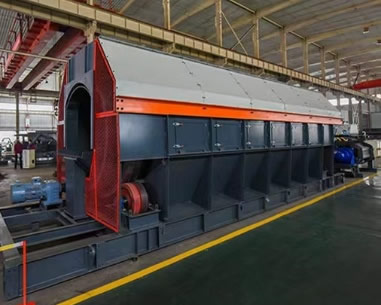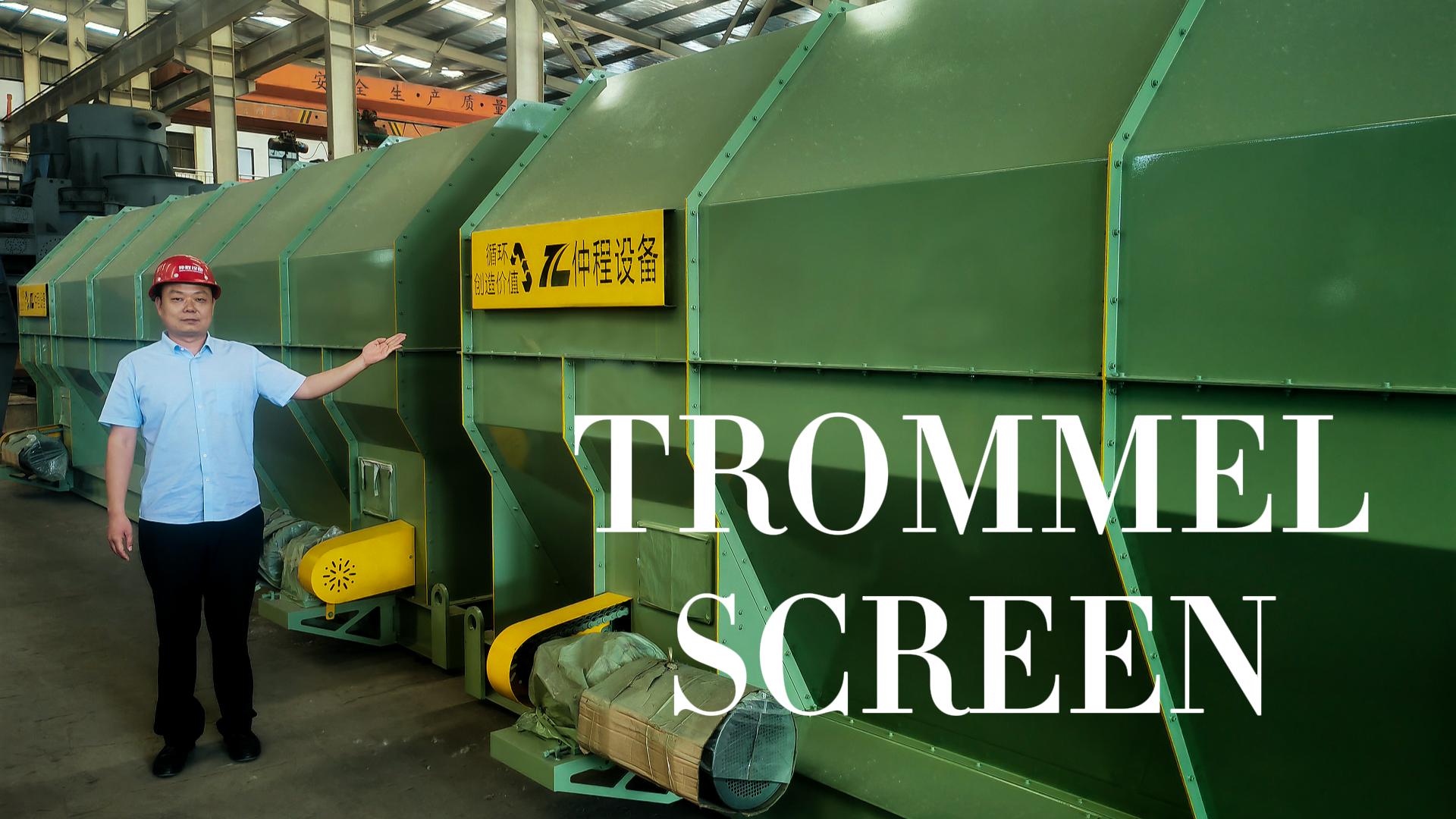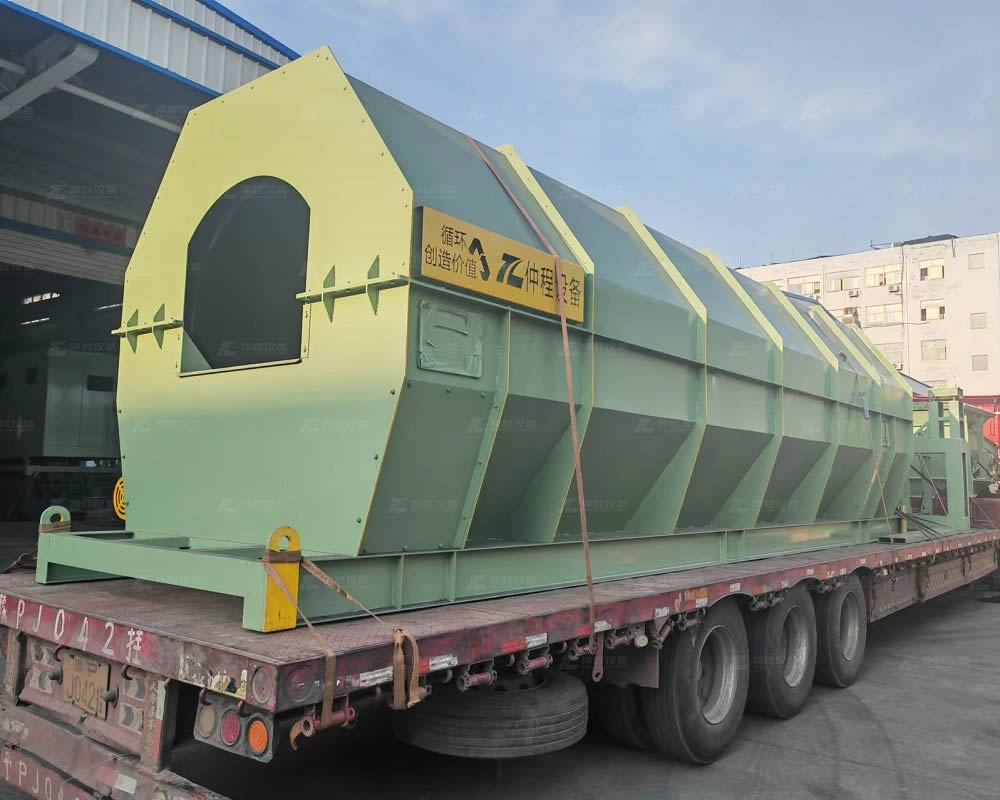
Drum Screen For Composting Plant
-
Production Capacity:
30~150m³/h
-
Applicable Industries:
Recycling Plants/Waste Management/Composting Facilities/MSW
-
Power:
5.5-22kw
-
Core Components:
Crankshaft maintenance access. Centralised lubrication system.
-
Place of Origin:
Henan, China
- Product Details
- Characteristics
- Working Principle and Application
- Parameters
YiSun Biological Co., Ltd., a resource recycling company specializing in the production of biological organic fertilizers, is located in Huangzhong District, XiNing City. After using the Zhongcheng drum screen for one year, the company provided positive feedback.
Lingyun wang, Facility Owner: "The drum screen has been a game-changer for us. The consistent particle size and reduced contaminants have allowed us to produce a premium compost product that our customers love.Investing in a drum screen was one of the best decisions we made. It’s robust, low-maintenance, and has drastically increased our processing capacity. The return on investment was quicker than we anticipated."
Drum screen, also known as a rotary drum screen or trommel screen, is an essential piece of equipment used in composting plants for the separation of compost materials based on size. It is a rotating cylindrical screen that separates fine compost from coarse materials, helping to produce high-quality compost. Here’s a detailed overview of drum screens and their applications in composting plants:
Components of a Drum Screen
Rotating Drum: The cylindrical screen that rotates to separate materials. It is typically made of steel and perforated to allow fine particles to pass through.
Motor and Drive System: Powers the rotation of the drum, ensuring consistent and controlled movement.
Feed Hopper: Where the compost material is loaded into the drum screen.
Discharge Chutes: Separate chutes for fine and coarse materials, directing them to their respective collection points.
Support Frame: Provides structural support to the entire setup, ensuring stability and durability.
Brushes/Cleaning Mechanism: Keeps the screen clean and prevents clogging, ensuring efficient operation.
Advantages:
Efficient Screening: Effectively separates fine compost from larger debris, improving the quality of the final product.
Scalability: Available in various sizes to accommodate different processing capacities.
Durability: Robust design ensures long-term use with minimal maintenance.
Versatility: Can be used for screening a variety of materials, including soil, sand, and gravel.
-
01High Throughput: Capable of processing large volumes of material quickly.
-
02Low Maintenance: Generally requires minimal maintenance due to its simple mechanical design.
-
03Adaptability: Can be customized with different screen sizes and drum lengths to suit specific applications.
-
04Reduced Operational Costs: Automates the separation process, reducing the need for manual labor.
Loading: Compost material is fed into the rotating drum via the feed hopper.
Separation: As the drum rotates, smaller particles fall through the perforations, while larger materials continue to move along the length of the drum.
Collection: Fine compost is collected in a chute below the drum, while coarse materials exit at the end of the drum.
Applications in Composting Plants
Primary Screening: Initial separation of compost materials to remove larger debris and contaminants.
Secondary Screening: Further refinement of compost to achieve a consistent particle size.
Quality Control: Ensures that the final compost product meets quality standards for particle size and purity.
Maintenance and Care
Regular Cleaning: Keep the screen and brushes clean to prevent clogging.
Inspection: Regularly check for wear and tear on the drum, motor, and other components.
Lubrication: Ensure that moving parts are adequately lubricated to prevent mechanical failures.
Adjustments: Adjust the screen angle and rotation speed as needed to optimize performance.
Purchasing Considerations
Capacity Requirements: Choose a drum screen with a capacity that matches the volume of compost processed.
Screen Size: Select the appropriate perforation size for the desired compost particle size.
Durability: Consider materials and build quality to ensure longevity.
A drum screen is a vital component in the composting process, enhancing the quality and consistency of compost products. By carefully selecting and maintaining the right drum screen, composting plants can achieve efficient and effective separation, leading to higher quality compost and improved operational efficiency.
| Model | Length Range | Segment No. | Aperture Size | Power (Kw) | Inclined Angle | Max. Material Size | Rotating Speed(rpm) |
| GTSφ600 | 2-4m | 1-2 | ≤30mm | 2.2-3 | 0-7° | 60mm | 12-18 |
| GTSφ800 | 2-5m | 1-3 | ≤50mm | 3-5.5 | 0-7° | 100mm | 12-18 |
| GTSφ1000 | 2-6m | 1-4 | ≤100mm | 4-11 | 0-7° | 150mm | 10-18 |
| GTSφ1200 | 3-8m | 1-4 | ≤150mm | 5.5-18.5 | 0-7° | 200mm | 9-15 |
| GTSφ1500 | 3-10m | 1-5 | ≤200mm | 7.5-22 | 0-7° | 250mm | 9-15 |
| GTSφ1800 | 4-12m | 1-5 | ≤220mm | 7.5-22 | 0-7° | 270mm | 8-15 |
| GTSφ2000 | 5-15m | 1-5 | ≤250mm | 11-30 | 0-7° | 300mm | 8-12 |
| GTSφ2500 | 5-18m | 1-6 | ≤300mm | 11-30 | 0-7° | 350mm | 8-12 |
customized according to your requirements
-
 Drum Screen For Composting PlantDrum screen, also known as a rotary drum screen or trommel screen, is an essential piece of equipment used in composting plants for the separation of compost ma...Get Quote
Drum Screen For Composting PlantDrum screen, also known as a rotary drum screen or trommel screen, is an essential piece of equipment used in composting plants for the separation of compost ma...Get Quote -
 Drum screen garbage processing machine for msw recyclingManaging municipal solid waste (MSW) efficiently is crucial for urban areas. Drum screen garbage processing machines are a game-changer in this field. They ensu...Get Quote
Drum screen garbage processing machine for msw recyclingManaging municipal solid waste (MSW) efficiently is crucial for urban areas. Drum screen garbage processing machines are a game-changer in this field. They ensu...Get Quote -
 Advantages of Using Drum Screening Machines in Waste ManagementUnderstanding the working principle of drum screening machines is essential to appreciate their efficiency and effectiveness in waste management. Operation and ...Get Quote
Advantages of Using Drum Screening Machines in Waste ManagementUnderstanding the working principle of drum screening machines is essential to appreciate their efficiency and effectiveness in waste management. Operation and ...Get Quote -
 msw trommel screen for waste recycling machineThis equipment is suitable for the particle classification process in all walks of life:The equipment is simple, easy to operate,and can be operated with a larg...Get Quote
msw trommel screen for waste recycling machineThis equipment is suitable for the particle classification process in all walks of life:The equipment is simple, easy to operate,and can be operated with a larg...Get Quote




